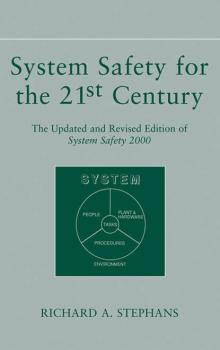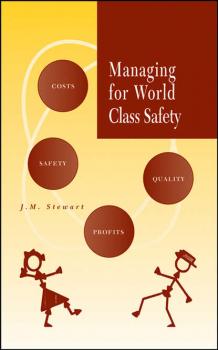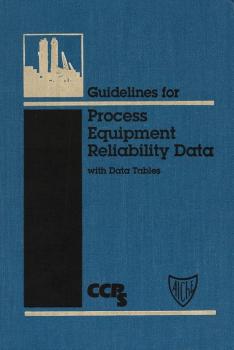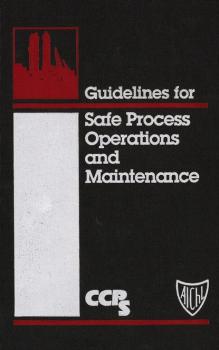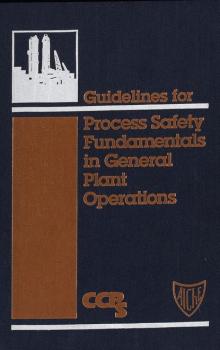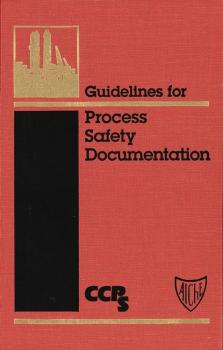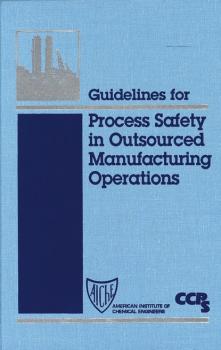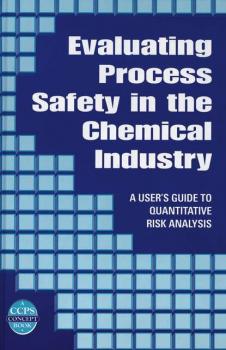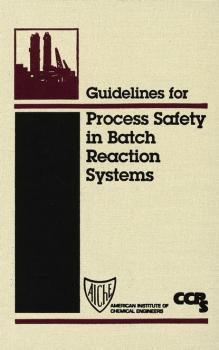ТОП просматриваемых книг сайта:
Техническая литература
Различные книги в жанре Техническая литература, доступные для чтения и скачиванияАннотация
Summarizes the current state of «front-end» risk-control techniques Many approaches to risk control are possible. However, only through careful reading, evaluation, and study can one make the best choice of a practical philosophy for a system safety program. The goal is to apply the best scientific and engineering principles in the best way, resulting in the soundest and safest possible system. System Safety for the 21st Century provides in-depth coverage of this specialized discipline within the safety profession. Written for both technical and nontechnical reference, this clearly organized text serves as a resource for both students and practitioners. It gives basic and essential information about the identification, evaluation, analysis, and control of hazards in components, systems, subsystems, processes, and facilities. Integrating the changes to the field that have occurred since publication of the first edition, this revised and expanded resource offers: * Logical progression from basics to techniques to applications * New focus on process safety not found in other texts * A new and unique section on professionalism for system safety and other safety practitioners * Presentation of both system safety scope and essentials * Consistent chapter format for easy learning includes an introduction and summary for each chapter * Review questions reinforcing important points * A combination of basis requirements with practical experience * Information on selected techniques to assess hazards and provide management oversight * An updated section on protecting against external events in the light of the global terrorist threat * Critiques of existing systems, including those of the Department of Defense and the * Department of Energy Relevant to industry, academia, and government, System Safety for the 21st Century is an essential resource for anyone studying or implementing proactive hazard identification and risk control techniques and procedures.
Аннотация
Despite the extensive literature on safety, few tools have been available to help managers quantitatively assess the level of safety management and the quality of the safety practices in organizations. In his consulting practice, Dr. Jim Stewart, a former executive at DuPont, developed such a method, crafting a safety survey centering on a comprehensive questionnaire for employees at all levels, that reveals the true level of corporate commitment to safety. Managing for World Class Safety first describes the model of safety management that underpins the questionnaire and then demonstrates how this innovative procedure illuminates critical intangibles like management commitment, the enforcement of rules, worker involvement, and injury investigation. The central part of this book is the description of research at the University of Toronto that applies the questionnaire in comprehensive research at five of the world’s safest companies and five with very poor safety. The questionnaire polled 700 people in the ten companies, «measuring» the level of more than twenty key elements such as: The workers’ perception of the priority given to safety The belief that all injuries can be prevented The extent to which line management takes responsibility/accountability for safety How well safety rules are followed and enforced The frequency and quality of safety meetings The level of recognition to reinforce safety excellence In every element, the contrast between the responses from the very safe companies and those from the companies with poor safety was dramatic, clearly depicting where the former succeed and the latter fail By developing quantitative benchmark data, Stewart reasons that it will be easier to convince reluctant management to undertake the fundamental change necessary for a «step change» in their company performance. Managing for World Class Safety promises a revolutionary new approach to workplace safety improvement for corporate leaders, safety professionals, and regulators.
Аннотация
An exhaustive resource for the industrial chemical community Through eleven editions, Gardner's Chemical Synonyms and Trade Names has become the best-known and most widely used source of information on chemicals in commerce. This companion book reflects the continuing research underlying Gardner's and presents a major expansion of the information provided for individual chemical compounds. Gardner's Commercially Important Chemicals: Synonyms, Trade Names, and Properties: * Contains 4,174 chemical entries and information such as structure, molecular formula, and chemical name * Includes synonyms for each chemical, including other identifiers, chemical names, trade names, and trivial names, in English and other languages * Provides chemical properties of the compounds, information concerning known uses of the chemical and biological data-in particular, acute toxicity in various species, where available * Lists the companies that manufacture or supply the listed chemicals * Describes bulk inorganic chemicals, major pesticides (herbicides, insecticides, antifungal agents, etc.), and many dyestuffs, surfactants, and metals, along with the most commonly used drugs * Contains indexes by chemical name and synonym, Chemical Abstracts Service (CAS) Registry Numbers, and EINECS (European Inventory of Existing Commercial Substances) numbers One useful feature of this database is the inclusion of physical properties and use data for pure chemicals. Properties that have been provided, when available, include: the melting point, boiling point, density or specific gravity, optical rotation, ultraviolet absorption, solubility, and acute toxicity. The major uses of most of the chemicals are indicated and, where appropriate, regulatory information is also provided.
Guidelines for Process Equipment Reliability Data, with Data Tables - CCPS (Center for Chemical Process Safety)
Аннотация
The book supplements Guidelines for Chemical Process Quantitative Risk Analysis by providing the failure rate data needed to perform a chemical process quantitative risk analysis.
Информация о книге
Автор произведения CCPS (Center for Chemical Process Safety)
Аннотация
First-line managers have to maintain the integrity of facilities, control manufacturing processes, and handle unusual or emergency situations, as well as respond to the pressures of production demand. On a daily basis, they are closest to the operating personnel who may be injured by a process accident, and they are in the best position to spot problem conditions and to act to contain them. This book offers these managers «how-to» information on process safety management program execution in the operations and maintenance departments, recommending technical and administrative process safety activities for the entire life cycle of the plant. Helpful tables and references add to the value of this process safety resource.
Информация о книге
Автор произведения CCPS (Center for Chemical Process Safety)
Guidelines for Process Safety Fundamentals in General Plant Operations - CCPS (Center for Chemical Process Safety)
Аннотация
At last, a book that covers safety procedures and standards with information that is rarely available outside of proprietary materials. A comprehensive source for basic and essential operations and procedures in use in any facility, the book offers chemical operators and first line supervisors guidance in applying appropriate practices to prevent accidents, and suggests which practices to avoid.
Информация о книге
Автор произведения CCPS (Center for Chemical Process Safety)
Аннотация
The process industry has developed integrated process safety management programs to reduce or eliminate incidents and major consequences, such as injury, loss of life, property damage, environmental harm, and business interruption. Good documentation practices are a crucial part of retaining past knowledge and experience, and avoiding relearning old lessons. Following an introduction, which offers examples of how proper documentation might have prevented major explosions and serious incidents, the 21 sections in this book clearly present aims, goals, and methodology in all areas of documentation. The text contains examples of dozens of needed forms, lists of relevant industry organizations, sources for software, references, OSHA regulations, sample plans, and more.
Информация о книге
Автор произведения CCPS (Center for Chemical Process Safety)
Guidelines for Process Safety in Outsourced Manufacturing Operations - CCPS (Center for Chemical Process Safety)
Аннотация
In today’s competitive economy, companies often augment in-house production by outsourcing chemical reaction processes and distillation, drying, formulating, blending, and packaging operations. While most of these tolling, or contracted manufacturing services, proceed without incident, recent major accidents have pointed to weaknesses in some tolling arrangements, such as reactivity of materials and processes. This Guidelines book provides the reader with proven procedures to improve process safety throughout the life cycle of a contracted manufacturing operation. Extensive checklists and examples used throughout the book make it a valuable learning tool and reference for companies conducting toll manufacturing, or considering outsourcing manufacturing operations.
Информация о книге
Автор произведения CCPS (Center for Chemical Process Safety)
Аннотация
Quantitative Risk Analysis is a powerful tool used to help manage risk and improve safety. When used appropriately, it provides a rational basis for evaluating process safety and comparing alternative safety improvements. This guide, an update of an earlier American Chemistry Council (ACC) publication utilizing the «hands-on» experience of CPI risk assessment practitioners and safety professionals involved with the CCPS and ACC, explains how managers and users can make better-informed decisions about QRA, and how plant engineers and process designers can better understand, interpret and use the results of a QRA in their plant.
Аннотация
Batch reaction systems pose unique challenges to process safety managers because they do not operate in a steady state. The sequence of processing steps, and frequent start-ups and shutdowns, increase the possibility of human errors and equipment failures. And, since batch plants are often designed for shared use, frequent modification of piping and layout may occur, resulting in complex «management of change» issues. This book identifies the singular concerns of batch reaction systems—including potential sources of unsafe conditions—and provides a «how-to» guide for the practicing engineer in dealing with them by applying appropriate practices to prevent accidents.
Информация о книге
Автор произведения CCPS (Center for Chemical Process Safety)

